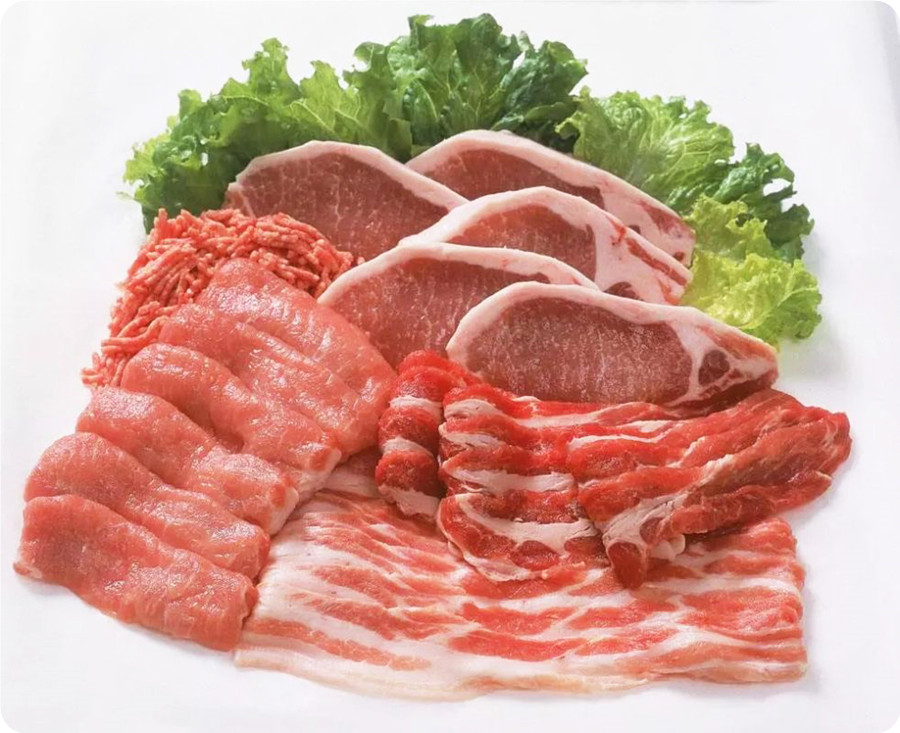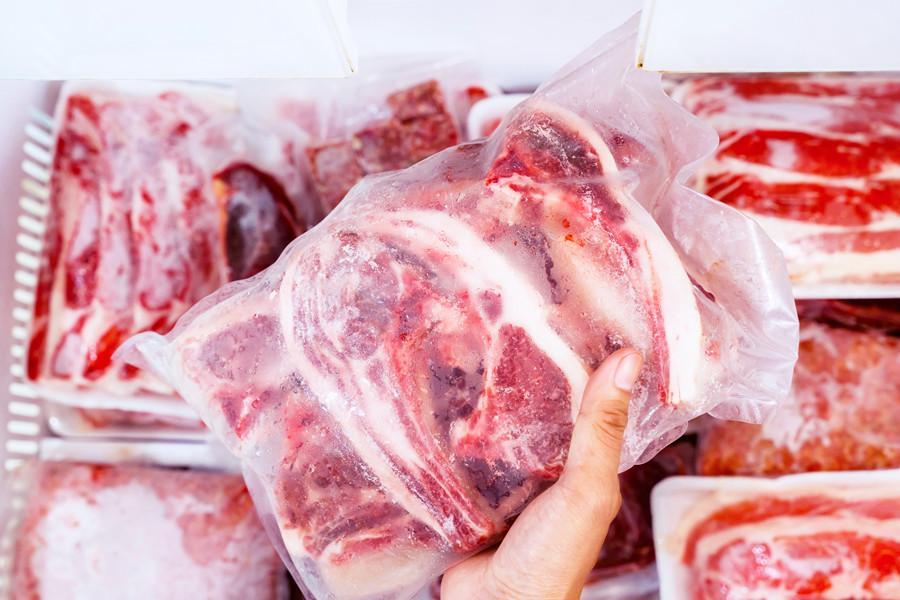1. Frozen Meat
1.1. What is Frozen Meat?
It refers to fresh meat that has undergone pre-slaughter quarantine, and passed the post-mortem inspection to be pre-cooled, and quick-frozen to become frozen meat.
The hot fresh meat just slaughtered must undergo heat dissipation and precool at 0 ℃ before rapid freezing. The purpose is to prolong the preservation period, and inhibit the activity and reproduction of microorganisms so that the meat can maintain good freshness and promote maturity. This can not only ensure the quality of frozen meat but also save frozen energy.
The freezing temperature is generally between -23°C and -45°C. The lower the temperature, the better the nutritional value and deliciousness can be maintained. The better the freezing effect, the better the quality of the meat. Frozen meat is refrigerated at -18°C.
1.2.Good Quality Frozen Meat
The fast-frozen meat is firm and hard, and the knocking sound is crisp, without thawing, and its core temperature is about -15°C. The muscles are shiny, red, and uniform, the fat is white, the appearance and cut surface are not sticky, the smell is normal, the broth is clear, and it has the same aroma and taste as fresh pork.
1.3. Poor Quality Frozen Meat
Frozen meat that has not been pre-cooled or has not been cooled enough will have a lot of frost on the surface of the meat, which will result in a lot of gravy loss during use and high meat consumption. Moreover, the meat surface is of good quality, but the deep layer will deteriorate due to poor heat dissipation. Sometimes the local fat turns green. If the storage time is too long or the refrigeration temperature is slightly higher, the quality of frozen meat may be reduced. This kind of meat has dull muscles, gray color, moist and sticky appearance, and cut surface, yellow fat, peculiar smell, turbid broth, lack of aroma, and umami.
Low-temperature freezing can certainly inhibit the reproduction of microorganisms and the activity of enzymes in meat, but inhibition does not mean stopping. Slow biochemical changes, oxidative rancidity of fat, and low-speed reproduction of psychrophilic microorganisms, coupled with the effect of “dry consumption”, will still. This leads to a decrease in the quality of meat. Therefore, the storage time of refrigerated meat cannot be too long.
2. Thaw Meat
2.1.What is Thaw Meat?
Frozen meat is thawed by air thawing, water thawing, electric thawing, etc. so that the muscle tissue is restored to a state similar to fresh meat, that is thawed meat.
2.2. Good QualityThaw Meat
The meat is glossy, dark red in color, white in fat, elastic in muscle tissue, slightly moist in appearance, nonstick to hands, no peculiar smell, transparent and clear in broth, with the same aroma and taste as fresh pork.
The quality of good quality thawed meat should be similar to fresh meat, but the quality can not be restored to the standard of fresh meat because it is treated by low-temperature freezing and refrigeration. Generally, the luster is slightly inferior to that of fresh meat. Due to the outflow of some blood during thawing, the color becomes pale, the surface is slightly moist, the nutritional value is slightly lost, and the water-holding capacity of meat decreases.

2.3. Poor QualityThaw Meat
The meat is slightly dark red, lacks luster, slightly yellow fat, or a small amount of mildew. The meat is soft or loose, the appearance is wet, slightly sticky, and there is exudate on the section, which is not sticky. There is slightly ammonia or sour. The broth is turbid, and the fat is small droplets or rarely floating on the surface, lacking fragrance and fresh taste.
2.4. Deteriorated Thawed Meat
The meat is dark red, dull, fat-stained yellow or gray-green, often mildewed, and loose flesh; the appearance and cut surface are moist and sticky; there is ammonia, sourness, or foul smell.
3. Re-frozen Meat
3.1. What is Re-frozen Meat?
It refers to meat that has been thawed twice or frozen repeatedly.
Refreezing the thawed meat will greatly reduce the quality of the meat. This is because the thawed meat has enhanced microbial reproduction and increased enzyme activity at room temperature, and it is not resistant to storage after refreezing and is prone to deterioration. The tissue of the first frozen meat has been destroyed under the action of ice crystals. Re-freezing is more destructive, which in turn makes the meat less water-retaining. After thawing, the nutritive value and flavor of the meat will be reduced due to the exudation of blood water. Therefore, special attention should be paid to this type of meat and the use of such meat should be refused.
3.2. Re-frozen Meat State
Even the re-frozen meat that has not deteriorated has a poor appearance and internal quality due to the above reasons. When it is generally frozen, the color is dark and dull, and the fat is gray. After thawing, the flesh is light brown, the juice is lost, and the tissue is loose.
At work, if you master the identification methods of the above three kinds of meat, you can distinguish fresh meat from thawed meat, and normal frozen meat from abnormal frozen meat.




